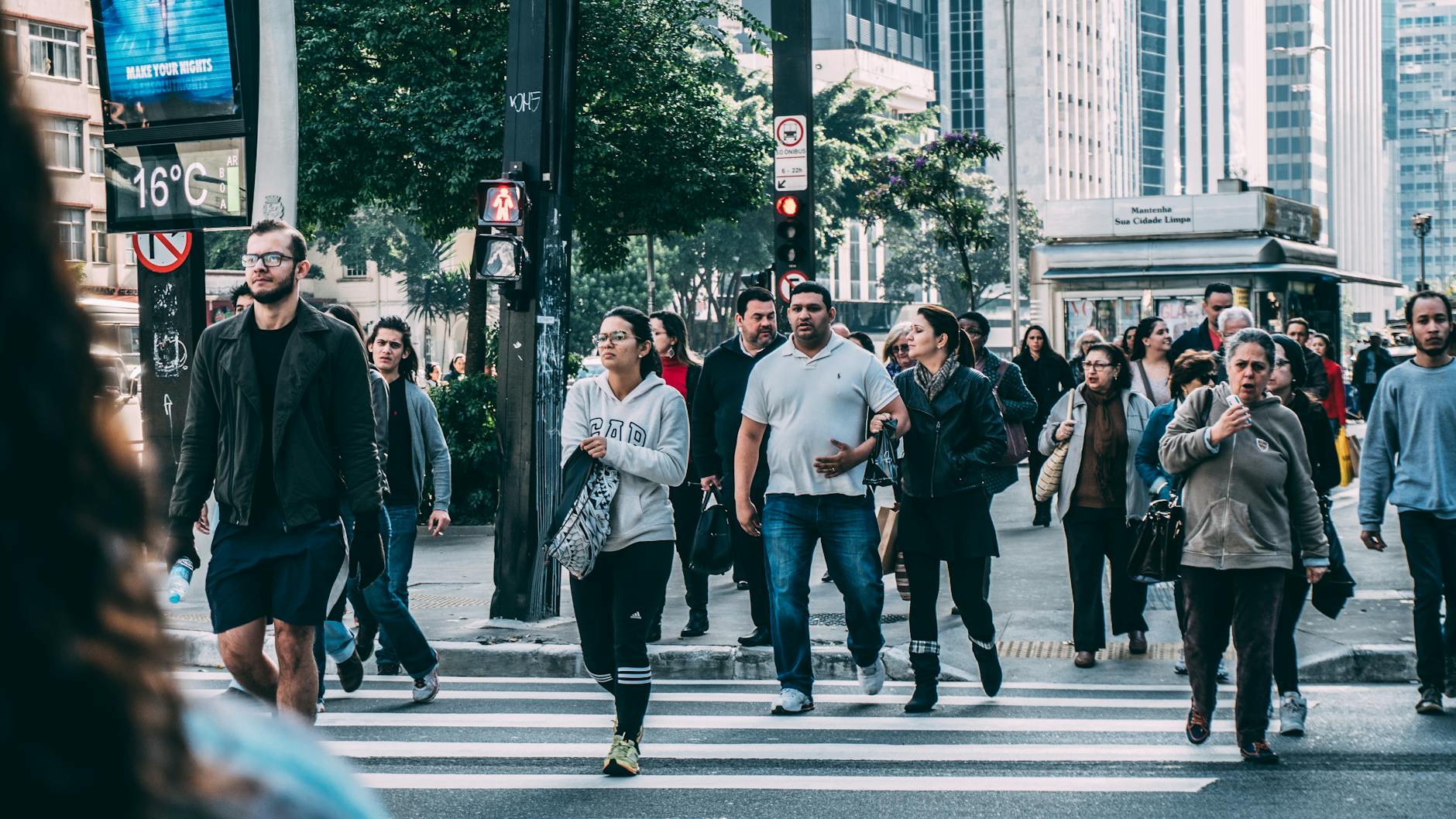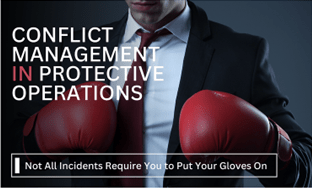There have been many reported incidents surrounding violence towards C-suite executives, with the most well-known case, the murder of the tech executive Bob Lee, founder of Cash App in San Francisco, last year and the death of Vivek Taneja, who was assaulted in downtown D.C. on February 2nd and succumbed to his injuries a day later. These incidents, along with many others, bring again to light the ongoing issue with crime rates in specific areas and the potential dangers that corporate leaders may face. We can all agree that in today’s world, the safety and security of high-profile individuals, particularly C-Suite executives, has become paramount. Targeted attacks, opportunistic attacks, kidnappings, thefts, workplace violence, cyber threats, natural disasters, and active shootings are some of the frequent risks that can pose a threat to their safety.

The Reality for Many Executives
One thing that the public does not know is that, unlike high-profile politicians or celebrities who often have round-the-clock security details, many C-Suite executives operate day-to-day without the constant presence of protective teams. Whether they are traveling for business, attending business meetings and conferences, or simply going about their daily routines, these individuals may find themselves exposed to various threats without the support of a security entourage. Often, the cost of their safety is not considered to be within their company’s budget, and many of them are fairly resistant to having a team of protectors consistently around them.
Opportunistic and Targeted Threats
- Pava LaPere, a 26-year-old tech entrepreneur, was found dead on the roof of her building, half-naked, strangled, and brutally beaten with a brick. She was killed by Jason Billingsley who, having been under police surveillance for another woman’s sexual abuse, was allowed to enter the building by LaPere herself.
- 51-year-old Forrest Hayes, the former senior director of Apple’s worldwide operations, was killed by a high-priced prostitute who injected him with a lethal dose of heroin and then left him to die on his luxury yacht.
- In 2019, Tushar Atre was kidnapped from his own home early in the morning hours and later on found dead. He was stabbed and shot multiple times.
- In 2022, Artemis Seaford, a high-level executive at Meta and dual US. – Greek national, was found to be surveilled by surveillance-for-hire software for around one year. Seaford was another victim of the “Greek Watergate,” for which the Greek government has been accused of spying on a number of its own citizens, including politicians, journalists, activists, and business owners.
As we know and can clearly see from multiple cases, threats can come from any direction and at any given opportunity. Those of wealth or stature in society find themselves to becoming a target or being “condemned” by groups who feel that they somehow deserve more and that their goal to achieve is best obtained through violence of some sort. We all saw how executives and personnel from pharmaceutical companies were targeted during the Covid lockdowns and how specific minorities (Asian) have been singled out for harassment recently due to the tedious stories surrounding the supposed origins of Covid as well as the tedious political arena of U.S/Chinese relations. Russian businessmen/women have become victims of various crimes against themselves, their families, assets, and companies.

How many Americans are targeted while overseas during their business or leisure trips, and how many executives are regularly targeted during company layoffs as well? While the first thing that comes to mind is the importance of preserving human lives, organizations have to also realize that any harm done to their executives and employees will have a tremendous impact on their business. The loss of the leaders in their business (the brains behind their products), the loss of their intellectual property, and the disturbance of their daily operations will cause the employees and customers to lose faith in them and they won’t feel safe within their facilities anymore.
Keeping Executives Safe
One may ask, how then can executives be safe and protected against natural disasters or physical and cyber security threats if they cannot be provided with a security team? The different attacks, the threat level, the fast social-political-geopolitical changes, and incidents that have already taken place, underscores the critical need for C-Suite executives to be better prepared and equipped with basic safety procedures and skills to ensure their well-being in the absence of dedicated protection.
Corporations have a responsibility to invest in the education and training of their executives to mitigate risks and safeguard their well-being. By providing specially designed safety training programs, companies can empower their leaders with the tools and knowledge necessary to protect themselves and make informed decisions in challenging circumstances. Not only will a safety training program benefit the individuals and organizations by saving lives, but it will also help with mitigating legal and financial risks, protecting intellectual property, protecting daily operations, improving productivity and morale, demonstrate corporate social responsibility, and enhance company’s reputation. We know that not all organizations have physical security teams for their executives. Some may not have the budget for it, and some, though the evidence is quite clear, do not see the necessity for it. However, there is a way for all businesses, big and small, to make their people safer.
Safety Educational Programs for Executives
Our team at LeMareschal has had the pleasure of conducting private classes for C-Suite executives and tech companies’ employees in the past. From our experience, we found out that many approach the training with an open mind and realize early on how much they need it, and some even say “I wish I would have done this earlier”. When you decide to provide these type of training options to this specific target group, you should consider who these people are and which environments they exist, create, and travel within. The purpose of these training programs is to provide them with the situational awareness that is required to navigate in the society that we live and travel in, and the knowledge and skills needed to protect themselves and their employees from potential safety risks. In today’s world, personal safety is increasingly important for everyone!
Considering the fact that many of these executives and employees are very busy individuals, there is a time restriction issue that you will always have to compete with. The training has to be long enough to give them a solid understanding of included topics, but also short enough to make it possible for them to attend. Sometimes people and organizations may be interested, but the timeframe required doesn’t allow them to give it any serious consideration.
What Topics Should an Executive Be Trained in?
As we’re sure there are quite of number of opinions on this subject, we have listed below some of the topics that we have found to be most helpful.
• Situational Awareness – How to be aware of their surroundings and identify potential threats. This includes identifying dangerous areas, suspicious individuals, and potential safety hazards.
• Body Language and pre-attack indicators – How to identify suspicious individuals according to their body language and facial expressions. This will also teach them how to identify deceit.
• Basic Threat Assessment – How to assess potential threats to their safety, including identifying potential risks in their work environment, while traveling, and even in their homes.
• Cybersecurity Awareness – Executives must be taught the importance of cybersecurity and how to protect their personal and professional devices and their confidential information from online threats.
• Travel Safety – How to stay safe while traveling, including how to navigate unfamiliar locations, how to use public transportation safely, how to avoid common travel scams, how to be safe in regards to hotels, how to identify and estimate risks while travelling, how to plan for a safe trip and what to consider when preparing in advance.
• Cultural Etiquette – How to avoid risk and embarrassment and how to draw less attention by adapting to local cultural behaviors.
• Emergency Preparedness – Executives will gain the knowledge and skills needed to respond to emergencies, including natural disasters, medical emergencies, and active shooter situations.
• Active Shooters – How to respond in the case of an active shooting situation. What steps to take to protect themselves and others.
• Security Measures – How to secure their homes, offices, and personal belongings to reduce the risk of theft and burglary and how to use personal protective equipment and apps.
• Stalking and Harassment – How to identify stalking signs, how to report it, and how to deal with it before it escalates.
• Conflict Management – How to identify different categories of conflict, how to manage it properly, and how to de-escalate situations as they arise.
• First Aid – This will help executives learn the basic first aid skills in case they have to respond to medical emergencies and injuries until professional help arrives.
In an era where threats to personal safety are ever-present, investing in the education and training of executives is not just a prudent business decision, but a wise preventative strategy. By equipping the ‘’brains’’ of your organization with the necessary skills and knowledge to protect themselves, your corporation can mitigate risks, protect your most valuable assets, and demonstrate a commitment to the well-being of your leadership team.
LeMareschal’s subject matter instructors are ready to come alongside and instruct your organization on how to be safe, more aware, and thus highly productive.
Any further questions? Give us a call for a free consultation.


















